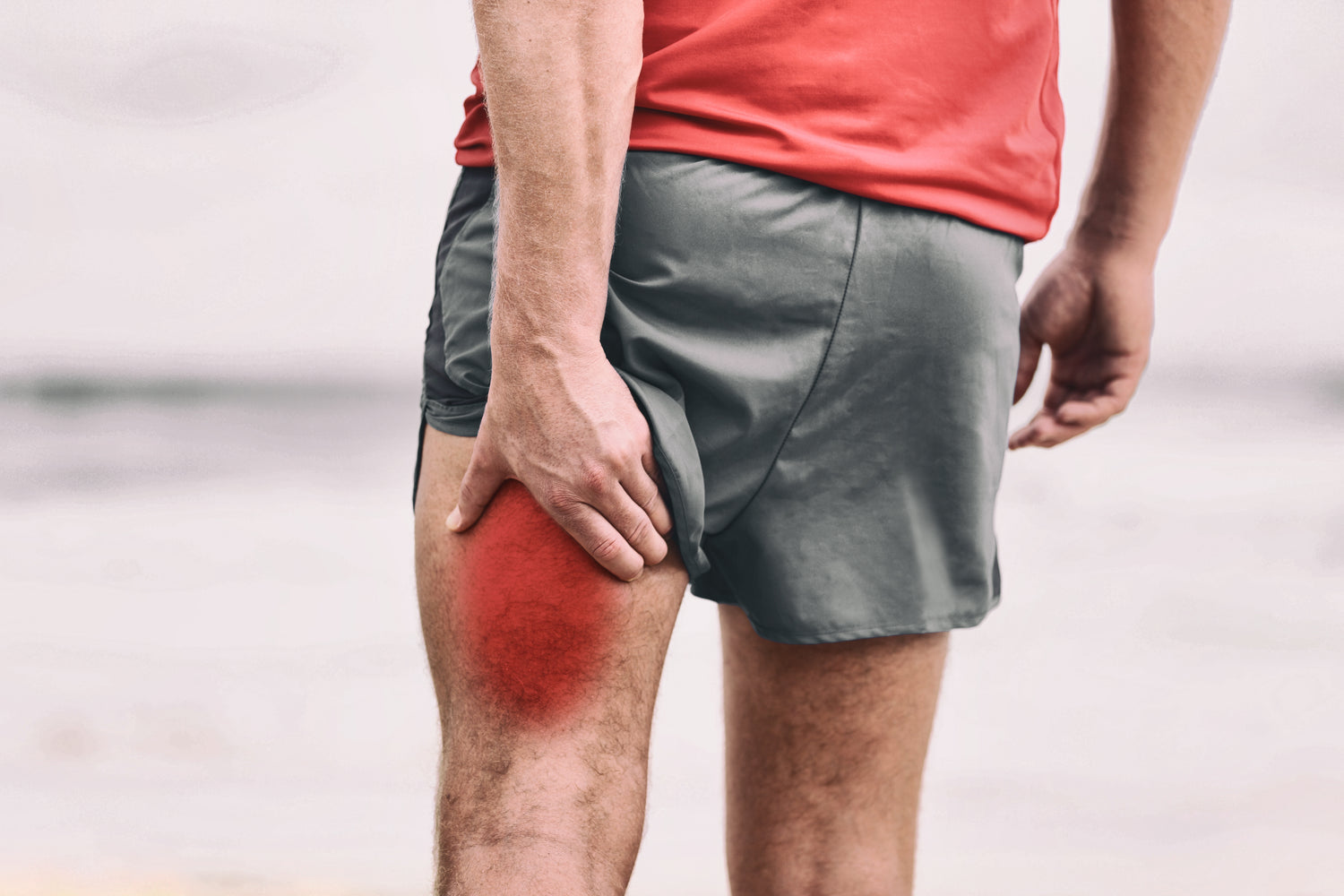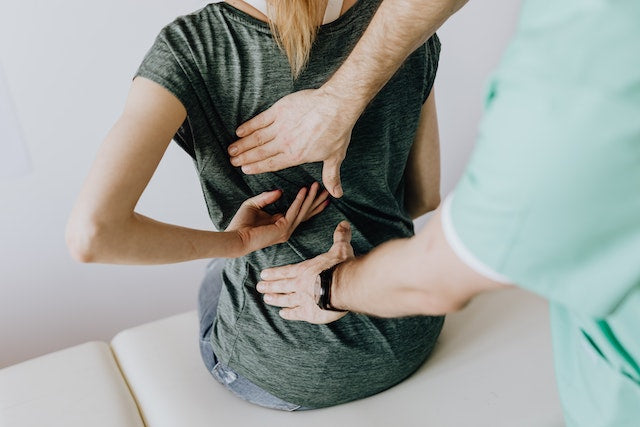Are you dealing with hamstring soreness and looking for ways to speed up recovery from this condition?
If yes, you're on the right page.
Hamstring soreness is a relatively common problem experienced by elite athletes and active individuals. This health condition occurs when the muscles in the back of your thigh become overworked, strained, or injured.
When this occurs, carrying out daily activities can become quite difficult and uncomfortable as the hamstrings are a major muscle group used for a range of motion and movement.
Many people experiencing this condition can even find it difficult to walk, run or even sit down.
Fortunately, there are several steps you can take to speed up your recovery from sore hamstring muscles. In this article, we'll go over simple but practical steps you can take to reduce the pain and discomfort associated with this health problem.
So, sit down, relax, and let's get started.
Understanding the Causes of Hamstring Soreness
Relieving muscle pain and soreness in your hamstrings all starts with understanding what factors are responsible for causing this condition in the first place. Let's explore some of them below.
1. Exercising with tight muscles
Exercising with tight muscles is one of the most common causes of hamstring soreness.
Muscle tightness can be caused by a number of risk factors, including poor posture, lack of stretching before and after exercise, and even dehydration.
When exercising with tight muscles, the risk of straining or overworking your hamstring muscles increases significantly. This can lead to soreness and even acute hamstring injuries.
2. Muscle fatigue
Muscle fatigue is another common cause of experiencing soreness in the back of your thigh.
This health condition occurs when your muscles become tired and weak due to excessive use or lack of rest. With tired muscles, absorbing the shock and intensity of an intense workout becomes difficult, leading to an increased risk of a pulled hamstring.
That's why taking breaks between workouts and getting enough rest is essential for preventing muscle fatigue.
3. Muscle imbalance
Muscle imbalance is another common cause of sore hamstring muscles. This occurs when the muscles in the back of your thigh are weaker than those in the front, leading to an increased risk of injury and soreness.
It's most common in athletes who focus on massaging certain muscle groups more than others. For instance, runners who only focus on their quads and calves can develop an imbalance in the muscles of their hamstrings.
With imbalanced muscle fibers, the risk of experiencing pain in your hamstring muscles increases significantly.
4. Poor stretching and warm-up routines

Do you often skip stretching and warm-up routines before and after exercise?
If yes, then you're putting your hamstring muscles under harm.
Stretching and warming up before exercise is essential for preparing your hamstring muscles for physical activity. Without proper stretching and warm-up, your hamstring muscles will be unable to absorb the shock of intense exercise, leading to an increased risk of injury.
5. Poor posture
How are you seated right now?
Are you sitting comfortably with your back straight and your shoulders relaxed? Or maybe you're standing with your feet shoulder-width apart and your knees slightly bent?
If not, then you could be putting yourself at risk of developing sore hamstrings.
Sitting or standing in an awkward position for too long can cause your hamstring muscles to become strained and tight. With sore hamstring muscles, performing everyday activities can become pretty hard and uncomfortable.
That's why it's crucial to maintain good posture throughout the day.
Now, these are just some of the most common causes of hamstring soreness. Let's now look at how you can tell if you suffer from this condition.
How to Tell if You Have Hamstring Soreness
Experiencing pain in the back of your thigh comes with various symptoms ranging from mild to severe. Some of them include the following:
Pain or tenderness in the back of your thigh
If you're experiencing sudden pain or tenderness in the back of your thigh, it could signify that your hamstring muscles are sore.
This pain can range from a dull ache to a sharp, stabbing sensation that radiates down your leg. You may also experience swelling, stiffness, and difficulty moving your leg. In severe cases, you may even find it difficult to walk or stand up straight.
Experiencing this type of pain clearly shows that you need to take some time off exercise and focus on complete recovery.
Swelling or inflammation in the affected area
Swelling or inflammation in the affected area is another common symptom your hamstring muscles are under strain. This can be caused by a hamstring strain, tear, or muscle overuse.
The swelling may be accompanied by redness and tenderness in the area and difficulty moving your leg due to stiffness. If you experience any of these symptoms, it's important to take some time off from exercise and focus on recovery.
Difficulty walking, running, or performing other physical activities
Finding it hard to walk, run, or perform other physical activities?
This could be a sign of sore hamstring muscles.
When your hamstring muscles are strained or tight, it can cause difficulty performing everyday activities. You may find also it hard to walk up the stairs or even stand up straight due to the pain and stiffness in your leg.
So, there you have it – a complete overview of the causes of hamstring soreness and how to tell if you're experiencing pain. Now let's look at some tips for recovery.
Helpful Ways to Speed up Hamstring Soreness Recovery
Speeding your recovery from sore hamstring muscles can be done in a few simple steps. Here are some tips to help you get back on your feet faster:
Take a break from physical activity
One of the most critical steps to take when recovering from pain in your hamstring muscles is to take a break from physical activity.
This means avoiding any activities that involve running, jumping, or other high-impact movements. Instead, focus on low-impact exercises such as walking, swimming, and cycling. This way, you can reduce any chance of muscle pull or tear.
Just ensure that you don't push yourself too hard and take regular breaks throughout your workout. You should take a few days off from exercise if your soreness persists.
Apply ice or heat
Another way to speed up your recovery from sore hamstring muscles is to apply ice or heat to the affected area.
This can be done by using an ice pack or a heating pad. Ice helps to reduce inflammation and swelling, while heat can help to relax the muscles and ease the pain. You should apply either one for 15-20 minutes at a time, several times a day.
Ensure you don't apply too much pressure, which could worsen the pain.

Take anti-inflammatory medications
Taking anti-inflammatory medications can also help to reduce the pain and swelling associated with hamstring soreness.
Nonsteroidal anti-inflammatory drugs (NSAIDs) such as ibuprofen or naproxen are commonly used for this purpose. These medications work by blocking the production of certain hormones that cause inflammation.
When taking these medications, it's important to follow the instructions on the label and not take more than the recommended dose.
Practice stretching and strengthening exercises
Stretching and strengthening exercises are an important part of recovery from sore hamstrings.
Performing stretching exercises help to reduce strain in your hamstring muscles, while strengthening exercises helps enhance your muscles' ability to absorb the high demands of physical activity.
When performing these exercises, it's important to gradually increase the intensity as your hamstring muscles become more accustomed to the movements.
Following these tips can help speed up your recovery from hamstring soreness and get back on your feet faster. Just remember to take it slow and listen to your body – if the pain persists, you can try out fitness recovery tools like foam rollers and massage gun therapy.
Let's see how these tools can help you get back on your feet faster.
Fitness Tools for Hamstring Soreness Recovery
Using fitness tools such as foam rollers and massage guns can help to speed up your recovery from any pain you feel in the back of your thigh. These are great for self-myofascial release and can be used from the comfort of your own home.
Let's look at them in more detail:
Massage guns
Massage guns are one of the most popular fitness tools for relieving muscle pain and soreness in your hamstrings.
These muscle recovery tools use percussive therapy to reach deep into your hamstring muscle tissue for soreness relief. They come with a wide range of attachments so you can precisely target your hamstring muscles and get the most out of your massage.
When using a massage gun, it's important to start slowly and gradually increase the intensity as your hamstring muscles become more accustomed to the movements.

Foam rollers
Another excellent tool for relieving pain in your hamstring muscles is a foam roller.
Foam rollers help release tension in your muscles and improve flexibility. They can target specific areas of the body, such as the hamstrings, and relieve muscle soreness and tightness.
Foam rollers are incredibly versatile and can be used in various ways. They provide only light pressure, so moving slowly and listening to your body is crucial for effectiveness.
Compression therapy like Air-C Pro
Compression massagers like Air-C Pro are great for relieving pain and soreness in your hamstrings.
These sleeves provide targeted compression to your hamstring muscles, helping to reduce inflammation and promote healing. They also help to stimulate blood flow to your hamstring and reduce swelling, allowing your muscles to recover faster.
The Air-C Pro leg massager is designed with comfort in mind and can be worn during physical activity or while resting. They are lightweight and breathable, so you can wear them for extended periods without feeling uncomfortable.
These are just a few of the fitness tools that can help you speed up your keep your hamstring muscles in good condition. Just remember to use them safely and take breaks when needed. With the right tools and techniques, you can get back on your feet faster and enjoy a pain-free life.
Frequently Asked Questions
After reading this article, you may still have some questions about hamstring soreness recovery. Let's look at some of the most common questions and their answers.
How long does it take to recover from hamstring soreness?
The amount of time it takes to recover from a sore hamstring will depend on the severity of your injury and how well you take care of yourself.
Generally speaking, most people can expect to see some improvement in their symptoms within a few days. However, full recovery may take anywhere from several weeks to several months, depending on the severity of the injury.
What should I do if my hamstring soreness persists?
If any pain you're feeling persists despite using the tools and techniques mentioned in this article, it is vital to seek medical advice.
Your health care provider may recommend a physical therapist or treatment plans to help reduce your pain and speed up your recovery.
They may suggest lifestyle changes such as reducing activities that strain your hamstrings or taking the anti-inflammatory medications we mentioned earlier.
How can I prevent hamstrings soreness?
Preventing hamstring soreness is key to avoiding injury and maintaining a healthy lifestyle. To ensure your hamstrings stay healthy, try dynamic stretches regularly and warm up before physical activity.
Getting enough rest and staying hydrated is also important, as water helps keep your muscles lubricated and reduces inflammation. Finally, listen to your body and take breaks when needed. Following these steps can help keep your hamstring muscles healthy and in good condition.
Conclusion
Speeding up recovery from hamstring soreness can be a challenge that takes time and effort.
But with the right approach, you can get back on your feet faster and enjoy a better quality of life. This involves taking necessary steps to reduce inflammation and swelling, such as applying ice, using compression sleeves, and taking anti-inflammatory medications.
It's also important to get enough rest, stay hydrated, and stretch regularly to help prevent pain in your hamstring in the future. You can even combine these steps with the fitness tools mentioned in this article to help speed up your recovery.
Feel free to reach out to share your experiences and ask any questions you may have about hamstring soreness recovery.





